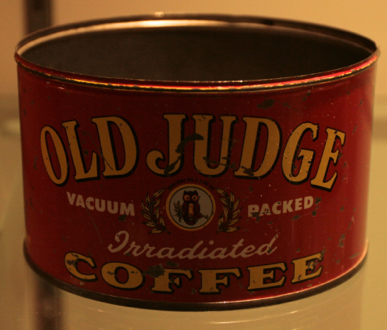
When I first started birding in South America, Coffee was my favorite morning drink. But at that time when you asked for coffee, in South America, you were served very old instant coffee - it was horrible. However, I quickly found that great tea was available. The tea experience I enjoyed in South America wandered back with me to my home in the north and tea is still my beverage of choice when I am at home. Not to say, that I have given up on coffee - I still like it, with a breakfast meal especially - and I might add that the South Americans have learned what they were exporting and it is possible to get some very good coffee in the Spanish and Portuguese speaking countries to the south.
When it comes to North American coffee I think that in general there are two types -- the rich wonderful brew which is available along the east and west coast and in certain enclaves through the middle of America and the stuff that you can see through which passes as a beverage in most of the interior portions of the USA and the southeast of the country. It has been posited that the beverage of middle America is best thought of as a different drink entirely -- not coffee at all, just colored hot water. When it is thought of in that fashion it is possible to avoid visible disgust at what the locals serve.
When I was much younger I lived in northern Italy for three years, becoming addicted to a local drink - called cappuccino - in the process. Cappuccino is made by adding equal parts of steamed milk and milk froth to espresso (or very strong coffee). These were the days before the great American Coffee Enlightenment, finding a good cup of coffee was almost impossible in the USA, the only stuff you could find was translucent. Upon our return to the states we went into Cappuccino withdrawal -- until we were able to buy a Cappuccino machine and quickly resumed our addictive practices while forcing our friends to queue up outside our door.
Coffee is generally made by roasting the seeds of Coffea arabica or Coffea canephora. mThe seeds (called beans) are then ground (preferably as close to the time that the coffee will be brewed as possible). The ground beans are then “soaked” in hot water in some manner - typically the hot water is allowed to soak through a portion of grounds -- becoming “coffee” in the process. As you can imagine this basic concept allows for a lot of variability in the taste, richness, and strength of the coffee. The type of bean, the method of roasting, and the freshness of the roasted bean are other factors which markedly affect the taste of coffee.
Coffee may be adulterated with sugar and/or cream (or other milks). The milks (dairy or non-dairy) may be added cold, heated, or steamed. The manner in which the coffee is adulterated results in a wide variety of coffee beverages.
Coffee plantations, where everything is stripped from the hillsides and coffee trees are planted, have a devastating effect on birds and other wildlife (flora and fauna). Recently, shade-tree coffee -- coffee which is grown on plots where some of the original trees are allowed to stand has become a popular method of mitigating the damage caused by traditional growing methods.